Hill-Sachs lesions
Once more, a spectrum of lesions can be seen on the back of the humeral head depending on the energy of the initial dislocation episode, and the frequency of dislocation. Hill-Sachs lesions can vary from a small cartilaginous dimple (Figure 6.27), to a full-blown osteochondral defect (Figures 6.28, 6.29, 6.30 and 6.31). It should be re-emphasized that the normal humeral head has a bare area of bone between the posterior synovial reflection and the cartilaginous surface (Figures 6.32 and 6.33), which must not be confused with a Hill-Sachs lesion.
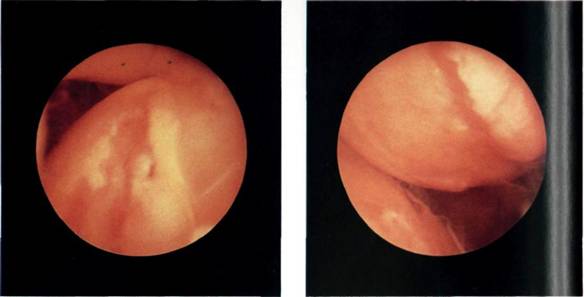
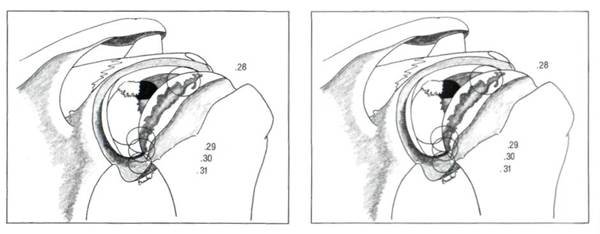
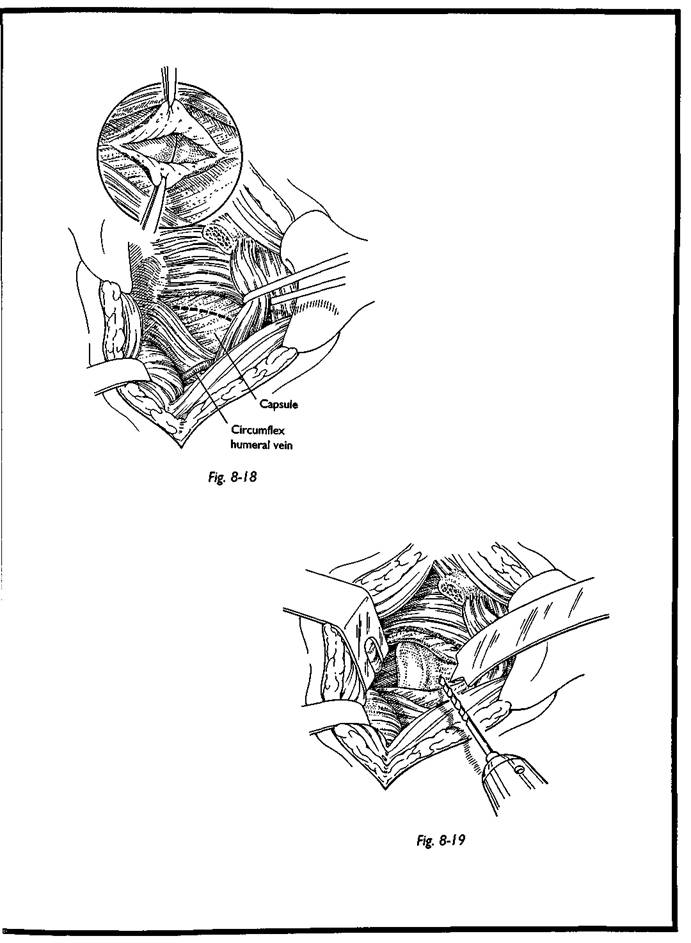
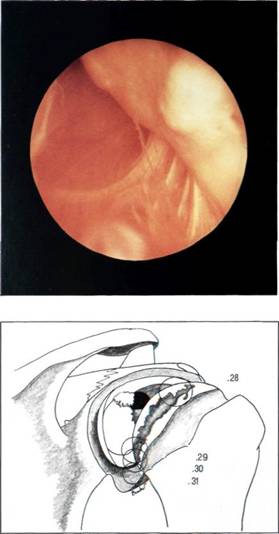
Figures 6.28, 6.29, 6.30 and 6.31 A large Hill-Sachs defect.
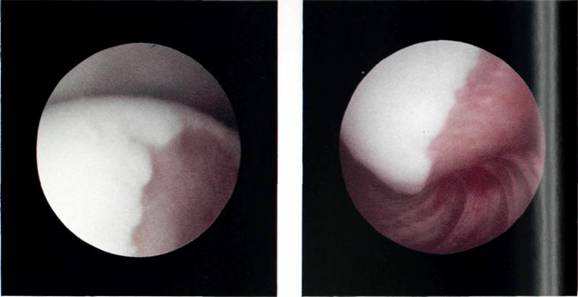
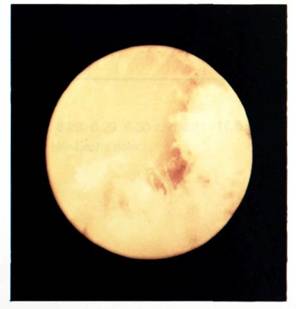
Figures 6.32 and 6.33 The bare area of the humeral head should not be mistaken for a Hill-Sachs defect. Note the difference from 6.28 to 6.31 in that there is no articular cartilage to the right (reflection side) of the bare area.


